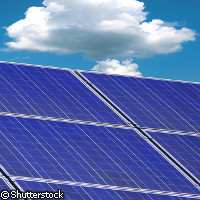JRC report highlights the need for increased investment in renewables
Europe can meet its ambitious renewable energy targets, but only if governments increase their financial and regulatory support for the new technologies, concludes a new report from the European Commission's Joint Research Centre (JRC). The EU has set itself the target of increasing the share of renewable energies in its total energy consumption to 20% by 2020. This target is part of the EU's wider efforts to tackle climate change. The JRC's 'Renewable Energy Snapshots' offer an overview of the development of the EU's renewable electricity-generation sector and analyse the chances of the 2020 target being reached. The report notes that as the transport sector is only obliged to obtain 10% of its energy from renewable sources, the electricity sector will have to make up for this. The authors estimate that 35% to 40% of the electricity used in 2020 will have to come from renewable sources. For comparison, in 2005 just 14% of electricity was generated via renewable sources, mostly hydropower, biomass and wind. The report does not foresee a major increase in electricity from hydropower, as most large hydro resources are already being exploited today. Furthermore, changing weather patterns and increasing demand for water mean these resources may not always be available in the future. Electricity generation from biomass could reach 200 terawatt hours (TWh) in 2020, up from 90 TWh in 2006. However, this figure could change as it depends on how much biomass is allocated to other energy uses such as heating and transport. On the solar energy front, concentrated solar power is still a small sector but thanks to successful demonstration projects in Spain, it is likely to grow rapidly in the coming years. Solar photovoltaic electricity is also growing fast, and the industry has now set itself the target of generating 12% of all electricity with solar photovoltaic technology. Wind energy already accounts for more newly installed power-generation capacity than any other technology; of the 24 gigawatts (GW) of new capacity installed in 2008, 35% came from wind power, 29% from gas-fired power stations and 19% from photovoltaics. The wind-energy industry hopes to increase its total installed capacity from 65 GW in 2008 to 230 GW by 2020. 'It can be concluded that if the current growth rates of the above-mentioned renewable electricity generation sources can be maintained, up to 1,600 TWh [45% to 50%] of renewable electricity could be generated in 2020,' the report reads. However, it goes on to warn that, 'without increased political support, especially in the field of fair grid access, and regulatory measures to ensure that the current electricity system is transformed to be capable to absorb these amounts of renewable electricity, these predictions will not come about'. The report adds that further research funding is also needed to enlarge the markets for these technologies, 'as cost reduction and accelerated implementation will depend on the production volume and not on time!'



